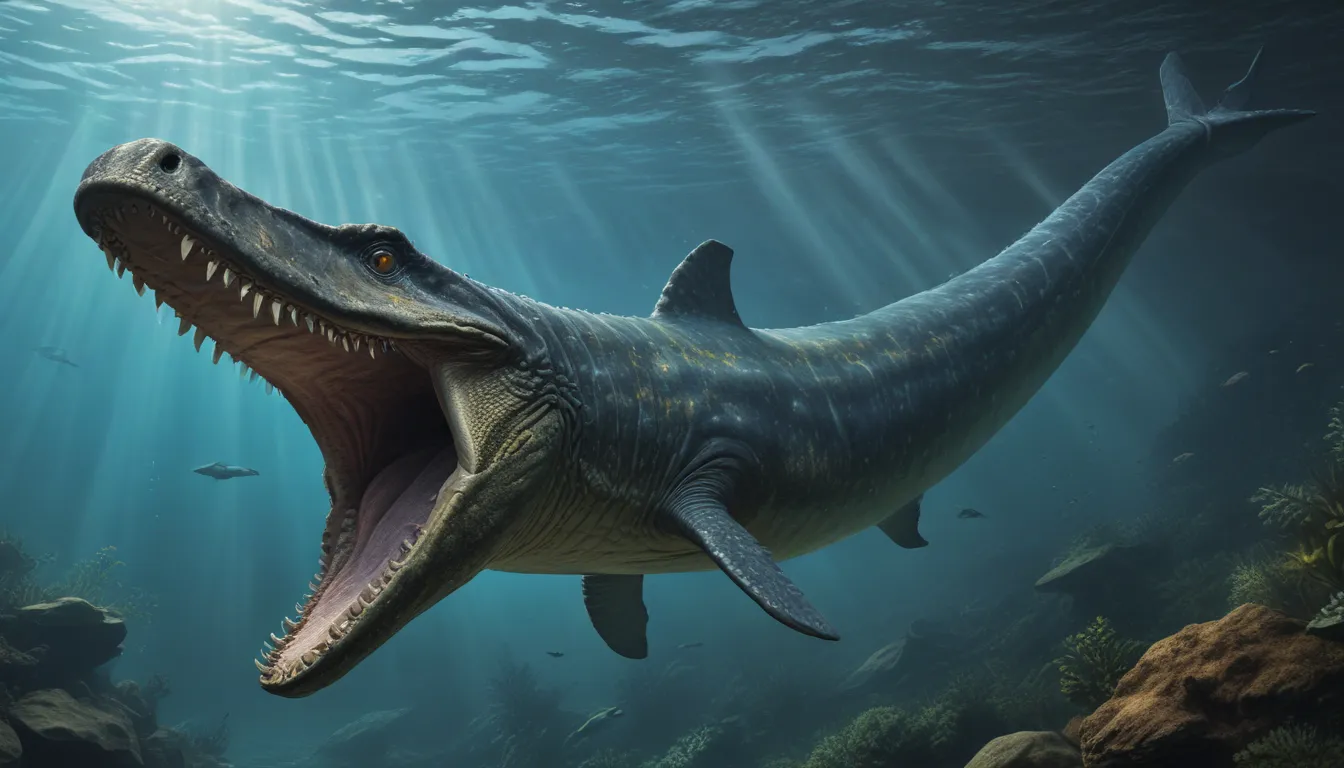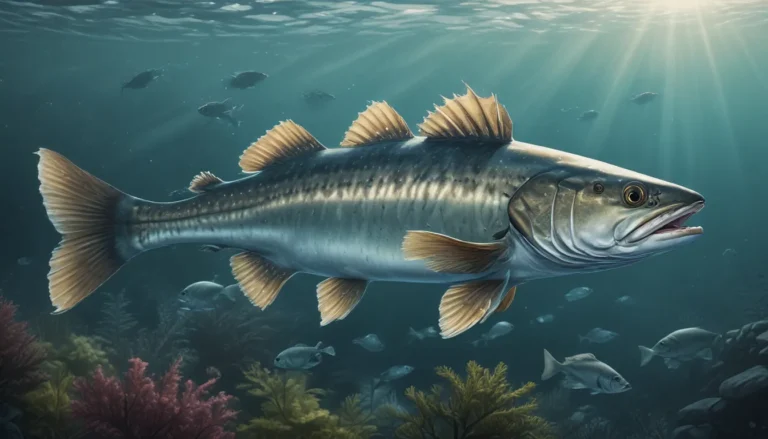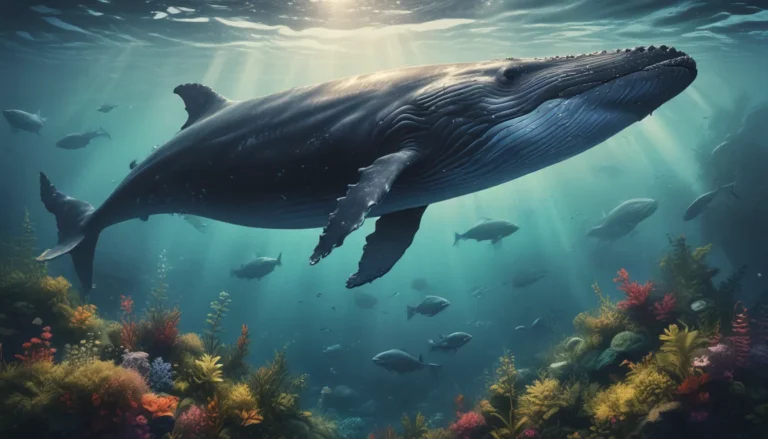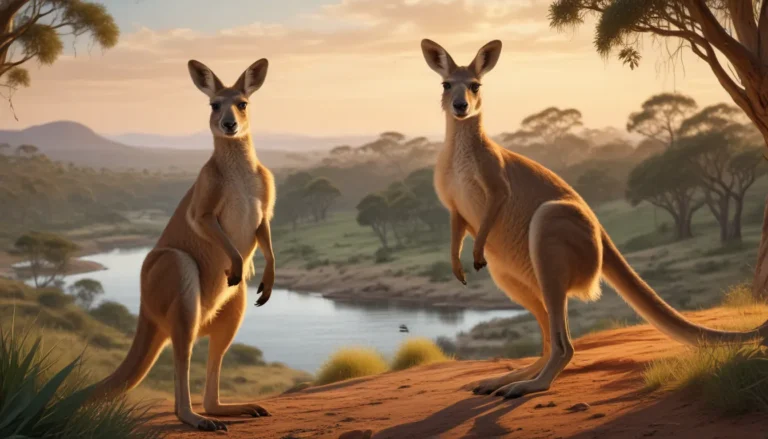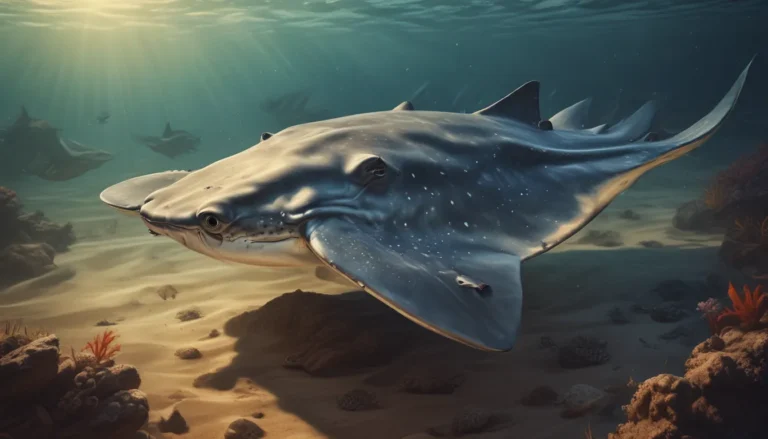The pictures we use in our articles might not show exactly what the words say. We choose these pictures to make you interested in reading more. The pictures work together with the words but don’t take their place. The words still tell you the important facts.
Welcome to a journey back in time to discover the incredible world of the Plesiosaur, a marine reptile that once ruled the ancient seas alongside dinosaurs. With its long neck, powerful flippers, and diverse diet, the Plesiosaur remains a captivating creature that has fascinated scientists and the public alike. Let's delve into 19 intriguing facts about this enigmatic predator and explore the wonders of prehistoric life.
Unveiling the Plesiosaur: A Majestic Marine Reptile
The Plesiosaur, a prehistoric marine reptile, swam the oceans around 200 million years ago during the Jurassic and Cretaceous periods. These creatures were not dinosaurs but belonged to a different group of reptiles known as the Sauropterygia. Despite their classification, Plesiosaurs varied in size, with some species measuring only a few meters while others reached lengths of over 15 meters.
A Closer Look at the Plesiosaur’s Anatomy
The Plesiosaur's unique body structure featured a long neck, small head, and a barrel-shaped torso. Their four paddle-like flippers allowed them to navigate the water effortlessly, while their streamlined body shape enabled swift movement through the oceans. Some species had necks with up to 76 vertebrae, granting them incredible flexibility and maneuverability underwater.
The Plesiosaur’s Lifestyle: Masters of the Seas
Excellent swimmers, Plesiosaurs were dominant predators that fed on fish, squid, and other small marine creatures. With sharp teeth and powerful jaws, they were well-equipped for hunting and devouring their prey. Fossils of Plesiosaurs have been found on every continent, offering valuable insights into their existence and behavior.
The Enigmatic Extinction of the Plesiosaur
Around 66 million years ago, the Plesiosaur, like the dinosaurs, faced extinction, possibly due to the mass extinction event that marked the end of the Cretaceous period. Despite their disappearance, the legacy of these remarkable creatures lives on through their fossils, which have captured the imagination of paleontologists and the public worldwide.
Unraveling the Plesiosaur’s Legacy
The name "Plesiosaur" originates from Greek words meaning "nearer to a lizard," reflecting their reptilian characteristics and somewhat lizard-like appearance. Their fossils continue to be a source of fascination and contribute to our understanding of prehistoric life. Despite not having a direct evolutionary connection to any living species, the Plesiosaur remains one of the most captivating creatures to have ever existed.
FAQs: Exploring Curious Questions About the Plesiosaur
- What does the word "Plesiosaur" mean?
-
The name "Plesiosaur" comes from Greek words meaning "near to" and "lizard," accurately describing the creature's resemblance to both lizards and dinosaurs.
-
How big were Plesiosaurs?
-
Plesiosaurs varied in size, with some species measuring around 3 meters (10 feet) to over 15 meters (50 feet) in length, with their necks comprising about half of their body length.
-
What did Plesiosaurs eat?
-
Plesiosaurs were carnivorous and fed on fish, squid, and other marine animals, utilizing their sharp teeth and strong jaws for efficient hunting.
-
Where did Plesiosaurs live?
-
Plesiosaurs inhabited oceans worldwide during the Mesozoic Era, with fossils found on every continent, indicating a widespread distribution.
-
Are Plesiosaurs related to dinosaurs?
-
Contrary to popular belief, Plesiosaurs are not dinosaurs; they were marine reptiles while dinosaurs were land-dwelling. Both groups faced extinction around 66 million years ago.
-
How are Plesiosaurs different from modern-day marine reptiles?
- Plesiosaurs possessed a distinctive body shape with four flippers and a long neck, distinguishing them from modern marine reptiles like sea turtles and marine iguanas.
Embark on a Journey of Discovery
In conclusion, the Plesiosaur brings us a glimpse of a bygone era, highlighting the diversity and splendor of life that once thrived on our planet. Through studying these ancient creatures, we uncover valuable insights into Earth's history and the remarkable organisms that shaped our world. Join us on this extraordinary expedition into the depths of prehistoric oceans and marvel at the wonders of the Plesiosaur, a creature that continues to captivate us with its mystery and grandeur.
